© 2017, Kyle T. Cobb, Jr. All Rights Reserved. Links | Terms and Conditions



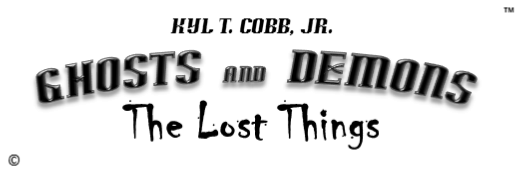



EXPLORE THE DIFFERENT TYPES OF PARANORMAL
GHOSTS AND DEMONS: THE LOST THINGS TAKES A CRITICAL LOOK AT THE TYPES OF PARANORMAL EVENTS USING HISTORICAL ACCOUNTS OF ENCOUNTERS. WHENEVER POSSIBLE FIRST HAND SOURCES WERE USED AS PART OF THE ANALYSIS.


A LOOK INSIDE
GHOSTS AND DEMONS: THE LOST THINGS candidly explores the different kinds of paranormal events. Using the historical records, each major class is tracked and evaluated. This chapter includes a look at Apparitions, Orbs, Poltergeists, Residual Hauntings and Shadow People. Demonic entities are explored in the last half of the book as a separate phenomena.
AN EXCERPT FROM THE SECTION ON APPARITIONS
When describing a ghost, a human apparition is the text book definition. Generally speaking, the belief is that a human apparition is the spirit of a once living person that has remained active after the body’s death.
While there are huge philosophical and religious implications to the existence of a human apparition, from a scientific perspective the documentation of human apparitions presents a fascinating challenge. Like a zoologist hunting for a supposedly extinct animal that only exists in rumors, documenting the presence of a human apparition is extremely difficult.
The physical description of human apparitions varies from seeing an entire body dressed in period clothing to simply hearing them. There is no clear linkage between the visibility of the spirit and the entities actual power. Even so, there is a tendency to think of seeing a full body apparition as one of the “holy grails” of investigating. Even so, completely invisible entities may be the most vocal or demonstrate the most ability to interact with the physical world.
The modern English word “ghost” has been inherited from the old English word “gást” which may be derived from the German “gaistaz” or the Norse word “geisa” (meaning “fury”).
While the word ghost seems to be the most commonly used term today, most likely the earliest English word for an apparition is the word “spirit” which was imported from the Latin word “spiritus” as used to describe intangible manifestation of the Christian god as the “Holy Spirit.” It is important to understand that fundamentally the word spirit was not treated the same as the modern idea of a soul. In translating Greek Biblical passages, spirit replaces the word πνεῦμα (pneuma) which is used in the New Testament works to describe evil spirits or intangible entities. This is used in contrast to the word “soul” which is translated from ψυχή (psuche or psyche).
–––––––––––
AN EXCERPT FROM THE SECTION ON ORBS
What is an Orb?
Before 1980, orbs were not considered paranormal. The few photographs of self-
Even though cases of ball lighting have been reported for hundreds of years, prior to 2014, science was unable to confirm its source or even its existence. Thanks to a lucky spectrometer and a high-
Even if ball lightning exists, is this the source of most orbs? Most likely not.
Figure 26 Close up of a Dust particle "orb"
In October 1980 the publication of a book called Photographs of the Unknown by Robert Rickard and Richard Kelly featured a number of staged “super natural” photos. While sold as an art book, many in the paranormal community embraced the book as a serious collection of captured images. One of the many types of images contained in the books was orbs created using lens flares and other photographic techniques.
Suddenly, orbs joined the paranormal community as a valid spirit form.
Even with the sudden popularity of orbs, virtually no photos of orbs were captured for the next decade. The few “orbs” that did emerge are easily explained by various photographic issues including mechanical failure of the camera shutters.
With the introduction of the digital camera in 1991, Kodak brought to market the Kodak DCS-
–––––––––––
AN EXCERPT FROM THE SECTION ON POLTERGEISTS
Prior to the release of the movie Poltergeist in 1982, the concept of a poltergeist was practically unknown to the general population. With such memorable phrases as "They're here..." and "Step into the light, Carol-
Unfortunately, the movie was so wildly inaccurate about the nature of poltergeist that viewers knew less seeing the film than in complete ignorance.
The term "poltergeist" is German (poltem-
In many ways, claims of poltergeist activity resemble claims of psychokinesis/telekinesis in that both seem to violate Newtonian laws of motions. As discussed earlier, Newton's first law involves the idea of inertia; that is, an object at rest will remain so unless an outside force causes the object to move. According to Newton's second law, the force required to move an object is equal to the object's mass times the acceleration. So for an object to be lifted off of the ground it must overcome the acceleration of the Earth's gravity pulling the object to the Earth's core at 9.8m/sec2 (or 32ft/sec2). Because Newton's third law requires the force to press against something causing an equal and opposite reaction, the question of poltergeist events presents a scientific as well as a logic problem.
For an object to move, something with mass must be exerting a force against it to cause it to move.
With psychokinesis/telekinesis, it is suggested that mental powers are being used to exert force on the objects. In spite of the hundreds of claims of such event, there are presently no known verifiable cases of psychokinesis/telekinesis events.
–––––––––––
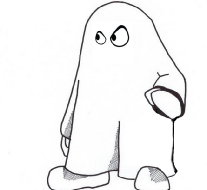
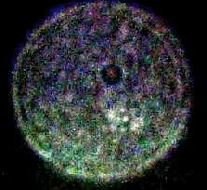
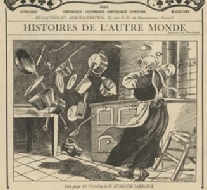
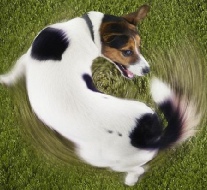
Apparitions
Orbs
Poltergeists
Residual Hauntings